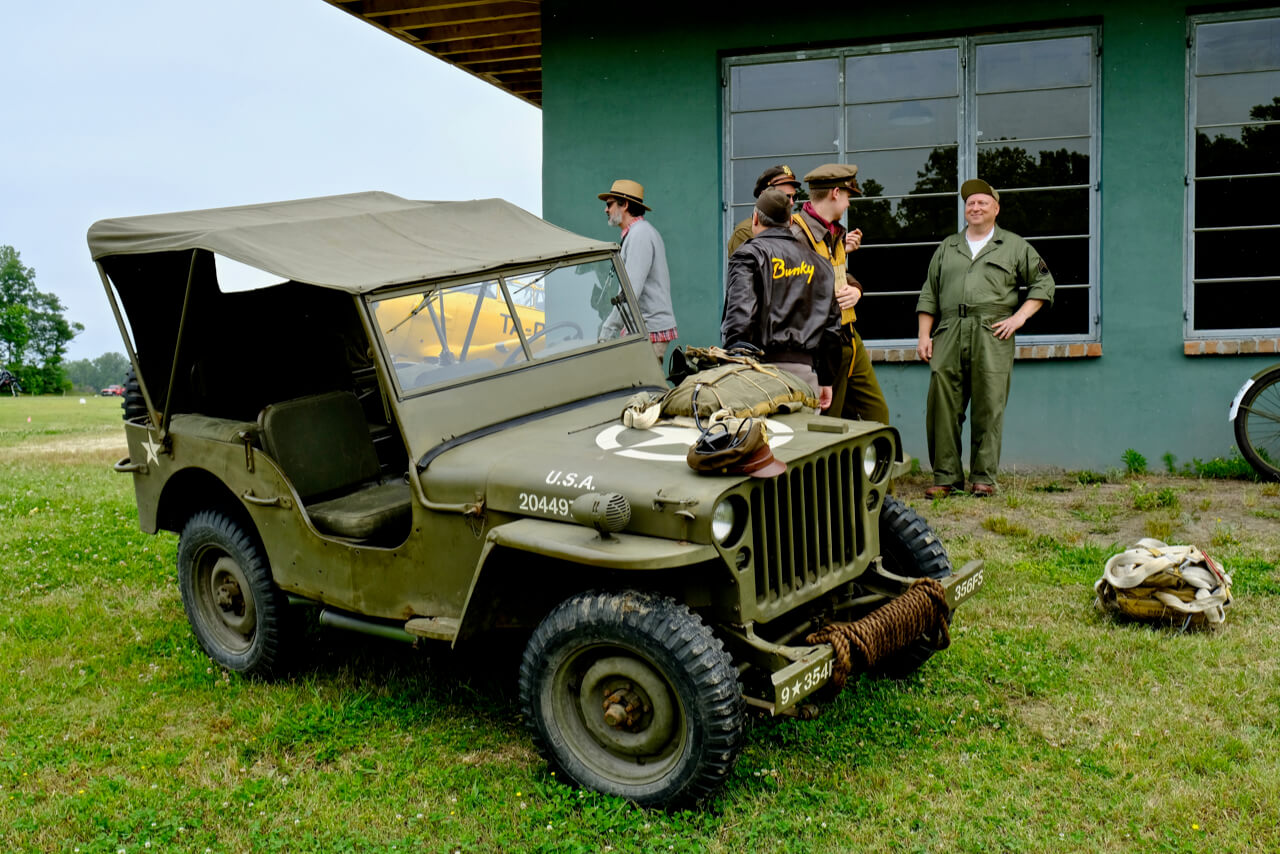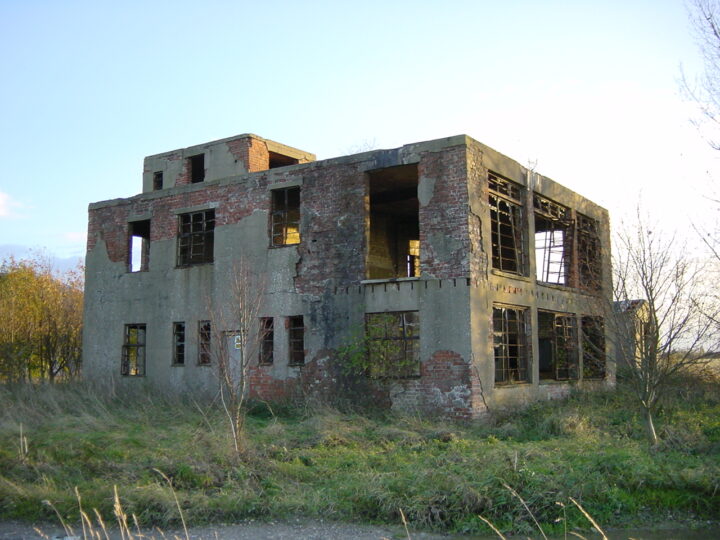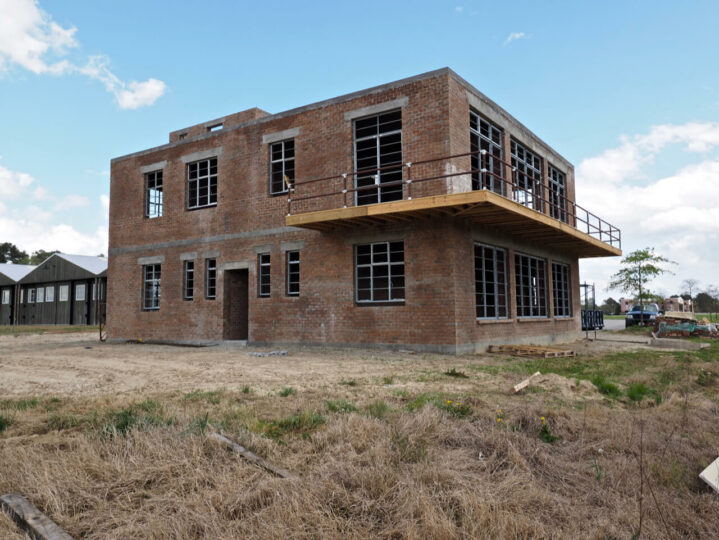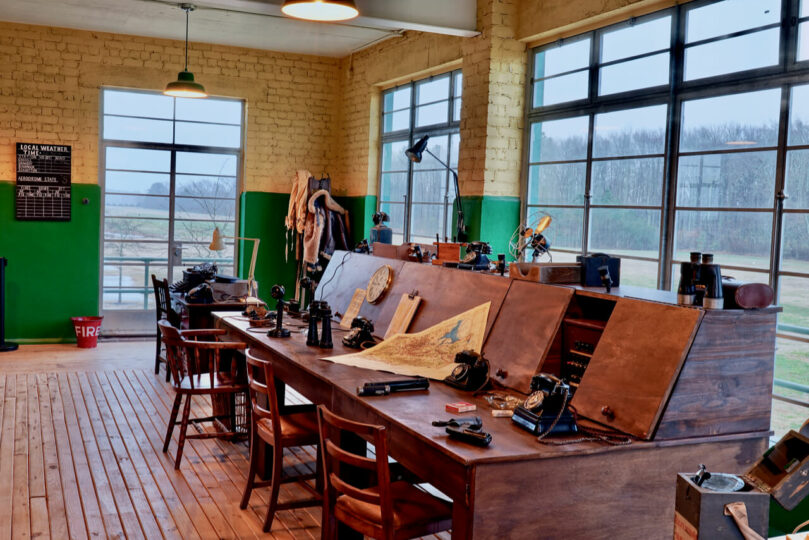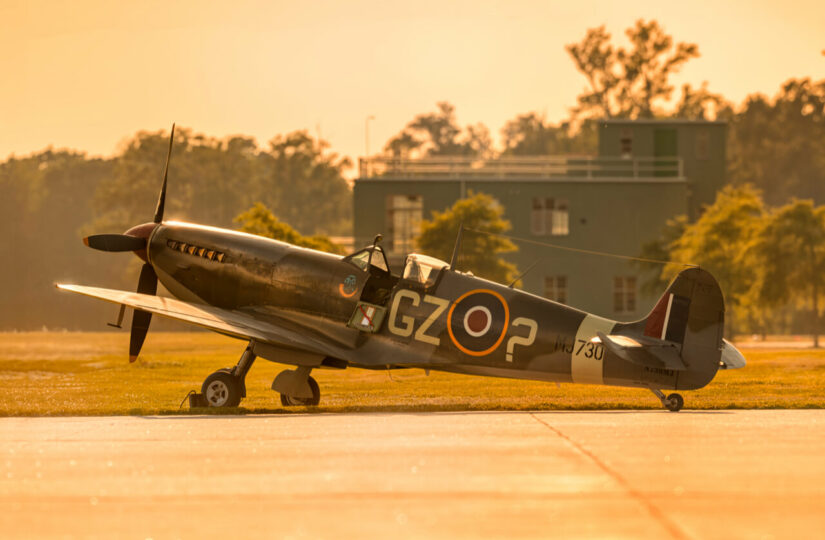This is the original Control Tower from USAAF Station #345 Goxhill, England. Formerly RAF Goxhill, the airfield was the first station turned over to the USAAF.
In 1940, during the frenzied early years of World War II, the Air Ministry surveyed the land all over Eastern England to determine sites that were suitable for military airfields. In 1940 hundreds of parcels of English farmland were hurriedly turned into airfields.
Beginning humbly as a Towed Target Flight Field, Goxhill was rebuilt as a Class-A Bomber Airfield, and in December 1941, Britain's 12 Group Fighter Command arrived with Mk Vb Spitfires of 616 Squadron.
On 7 December 1941, the Japanese attacked Pearl Harbor, and within six months of that attack the lead elements of the United States of America Fighter and Bomber Squadrons arrived in England. By 1943 there were over 100,000 US airmen based at over 100 airfields in the UK.
In August of 1942, RAF Goxhill was the first British airfield formally transferred to the United States Army Air Force under a larger series of agreements made between 27 January and 27 March, 1941. These agreements provided for American naval, ground, and air support of campaigns against Nazi Germany. Although it would not become a bomber base as so many others would, Goxhill would play an important role in USAAF operations.
At various times Goxhill was home to squadrons flying the P-38 Lightning, the Spitfire MK V, the P-47 Thunderbolt, and the P-51 Mustang. These units typically spent 90 days at Goxhill, learning their new planes and combat tactics while practicing local flying and learning the geography and generally lousy weather frequently encountered in the United Kingdom. After 60-90 days, these units would be posted to their operational bases and new units would take their place.
For a period of time, Goxhill was also home to the 496th Fighter Training Group, which heroically overcame maintenance shortfalls, aircraft shortages, and challenges to morale in order to train more than 2,400 replacement fighter pilots for those lost in the European Theater of Operations (ETO).
Abandoned in the years after the war, the Goxhill Watch Office would be purchased for the Museum by its founder Gerald Yagen and relocated to Virginia Beach. The effort to reconstruct the tower itself was completed in 2018. Work continues on assembling the interior and locating artifacts that would once have occupied the tower.
Airfield Service Equipment
Often displayed alongside our aircraft or found traveling around the Museum grounds are pieces of Airfield Service Equipment like Jeeps or vintage fuel bowsers. In some cases, specific equipment with no modern equivalent is needed to operate the airplanes, and in other cases these vintage pieces are kept running to share their exciting history with the visitors. From German Kettenkrads, to American Jeeps, the Museum grounds are home to interesting and unusual vehicles.
